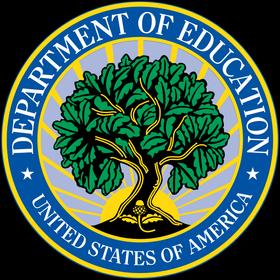If you have a child with special needs, you are no doubt familiar with many of the services and accommodations provided to them by their school. You may also clearly understand some of the laws that guarantee your child the appropriate support services in an educational setting. You are likely also familiar with the time, energy, and red tape required to obtain services for your child. It is a complicated process, with many legal underpinnings guiding developing and administering programs for special needs kids.
Individuals with Disabilities Education Act
First passed in 1975 as the Education of Handicapped Children Act, the (IDEA), as it stands today, is the result of revisions in 1990, 1997, and 2004. Before 1975, children with disabilities were either placed in segregated classrooms in public schools or denied access to public education altogether.
This video explains IDEA.
Today’s iteration of IDEA includes four parts, including Part B, which outlines the service requirements for children from 3-21 years of age, and Part C, which governs the administration of services to children from birth to 2 years of age. IDEA, among other things, establishes that families have a right to:
- A Free and Appropriate Public Education for school-aged children.
- An Individualized Education Plan for public school students.
- A consultation with a school professional to determine the level of a disabled child’s needs.
- Access to early intervention services for infants and toddlers.
- An Individualized Family Service Plan for infants and toddlers.
IDEA guides the process by which a student is identified as having a disability. First, a child is identified, usually by referral from school personnel. Parents can also request that their child be evaluated if they suspect a disability is present. Once the child is assessed, his or her eligibility for services is determined. If the determination is made that the child has a disability, an IEP meeting is scheduled, and the document is written. From there, services are provided, and annual progress is measured and reported.
Free and Appropriate Public Education
An essential component of IDEA is the guarantee of a Free and Appropriate Public Education (FAPE). The Rehabilitation Act of 1973 protects the rights of disabled individuals concerning programs that receive federal funding. of the Rehabilitation Act specifies that:
“No otherwise qualified individual with a disability in the United States . . . shall, solely by reason of her or his disability, be excluded from the participation in, be denied the benefits of, or be subjected to discrimination under any program or activity receiving federal financial assistance…”
Section 504, which the U.S. Department of Education enforces, requires schools to provide FAPE to any disabled child regardless of the severity of his or her disability.
- Provide, at no charge, special education services to qualified students.
- Provide, at no charge, support services, such as occupational therapy, mental health counseling, or speech services to qualified students
- Provide educational programming in a Least Restrictive Environment (LRE).
- Schools must offer accommodations to disabled students so that they can participate in regular education classrooms.
- Schools can place disabled students in restricted classrooms only if they cannot be educated appropriately in a regular education classroom
- Develop an Individualized Education Plan (IEP), which outlines the services to be provided to the student.
However, there are some limitations to FAPE. Schools are not required to provide services superior to those that students without a disability receive. For example, while a public school district might pay for a regular education student to attend a private school to have better opportunities, it is not required to pay for a private school for a special education student if the services provided in the public school are appropriate.
Likewise, schools cannot give preferential treatment to a child with a disability. Suppose limited spaces are available in a particular class. In that case, a special education student has an equal—not greater—chance of getting into that class as his or her regular education peers. Similarly, schools are not required to offer specific programs or accommodations at parents' request. While parents can make suggestions or ask for specific adjustments, the final decision on special education programming is left to the school district.

Individualized Education Plan
Another critical aspect of IDEA is creating and administrating an Individualized Education Plan (IEP). An IEP aims to improve the processes of teaching disabled students and increase their ability to learn. The IEP essentially describes the educational program and supportive services identified for each specific child. :
- Statement of Current Performance: This statement explains how a student is doing in school. It includes testing results, classroom performance, and input from parents, teachers, and other service providers.
- Goals: This section includes realistic, measurable goals that the child can accomplish in a given year. Goals may be physical, behavioral, emotional, or academic in nature. The IEP must also explain how progress will be measured and how parents will be informed of progress.
- Special Services: Services for which the student is eligible, such as support services like counseling and classroom-based accommodations.
- Participation With Nondisabled Students: This section explains the extent to which a disabled child can interact with nondisabled students.
- Testing Requirements: Outlines the accommodations special education students can receive during standardized testing.
- Dates and Places: This section states when special services are to begin and end, where they will be provided, and how often the child will receive them.
- Transitional Services: This section identifies the courses the child needs to take to achieve his or her goals after graduation and explains the services available for transitioning out of school.
- Age of Majority: At least one year before the child reaches the age of majority (18 in most states), the student must be informed of the rights that will transfer to him or her upon reaching the majority age.
The IEP team is composed of various parties, including special and regular education teachers, service providers such as speech therapists, school administrators, representatives from transitional services such as Vocational Rehabilitation, parents, and the student. Together, the team establishes the criteria outlined above, implements the plan, and reviews the plan at least once a year.
This video explains the IEP.
Many parents express confusion about the . Where an IEP outlines the specialized instruction and support services a student is entitled to receive, a 504 Plan merely outlines accommodations that will facilitate a student’s access to and success in the learning environment. Therefore, a student on an IEP may be entitled to special education instruction, speech-language pathology services, other support services, and specific classroom accommodations such as extra time to complete assignments. However, a student on a 504 Plan would only be eligible for the extra time to complete assignments and other classroom accommodations.
Conclusion
Special education laws can be highly confusing for parents to decipher. There are many regulations and requirements, and how they are implemented may also be frustrating. Staying informed about your child’s rights and IDEA is essential to receiving the services they need to achieve their highest potential.
Your local school district has a special education coordinator who can answer your questions regarding special education services in your area and at your child’s specific school. Many districts also employ parent liaisons or advocates so parents have all the information and support they need to ensure their child has appropriate support services.
Questions? Contact us on Facebook. @publicschoolreview













